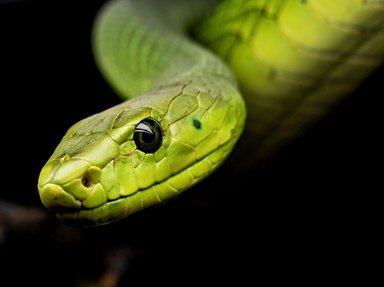Quiz Answer Key and Fun Facts
1. Which of the following African snakes is usually credited with having the longest fangs in the serpent world?
2. Found in southeastern areas of the USA, what is the more common name for the venomous pit viper Agkistrodon piscivorus?
3. What is the most common venomous snake in Europe?
4. The black mamba is the longest snake in Africa and while imposing, it is only mildly toxic.
5. The eastern brown snake can be hard to identify for which of the following reasons?
6. In which of the following continents would I most likely be if I ran into a spitting cobra in the wild?
7. Which of the following is a type of snake that appears on the unofficial flag of the Caribbean Island of Martinique?
8. Many herpetologists claim that which south-east Asian snake kills more people every year than any other snake on the planet?
9. Which of these indigenous snakes should you never attempt to put into a wooden shipping box if you ran into one while visiting the bustling island of Hong Kong?
10. Pythons, which kill by constricting their prey, have no teeth or fangs of any kind.
Source: Author
dcpddc478
This quiz was reviewed by FunTrivia editor
gtho4 before going online.
Any errors found in FunTrivia content are routinely corrected through our feedback system.

